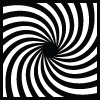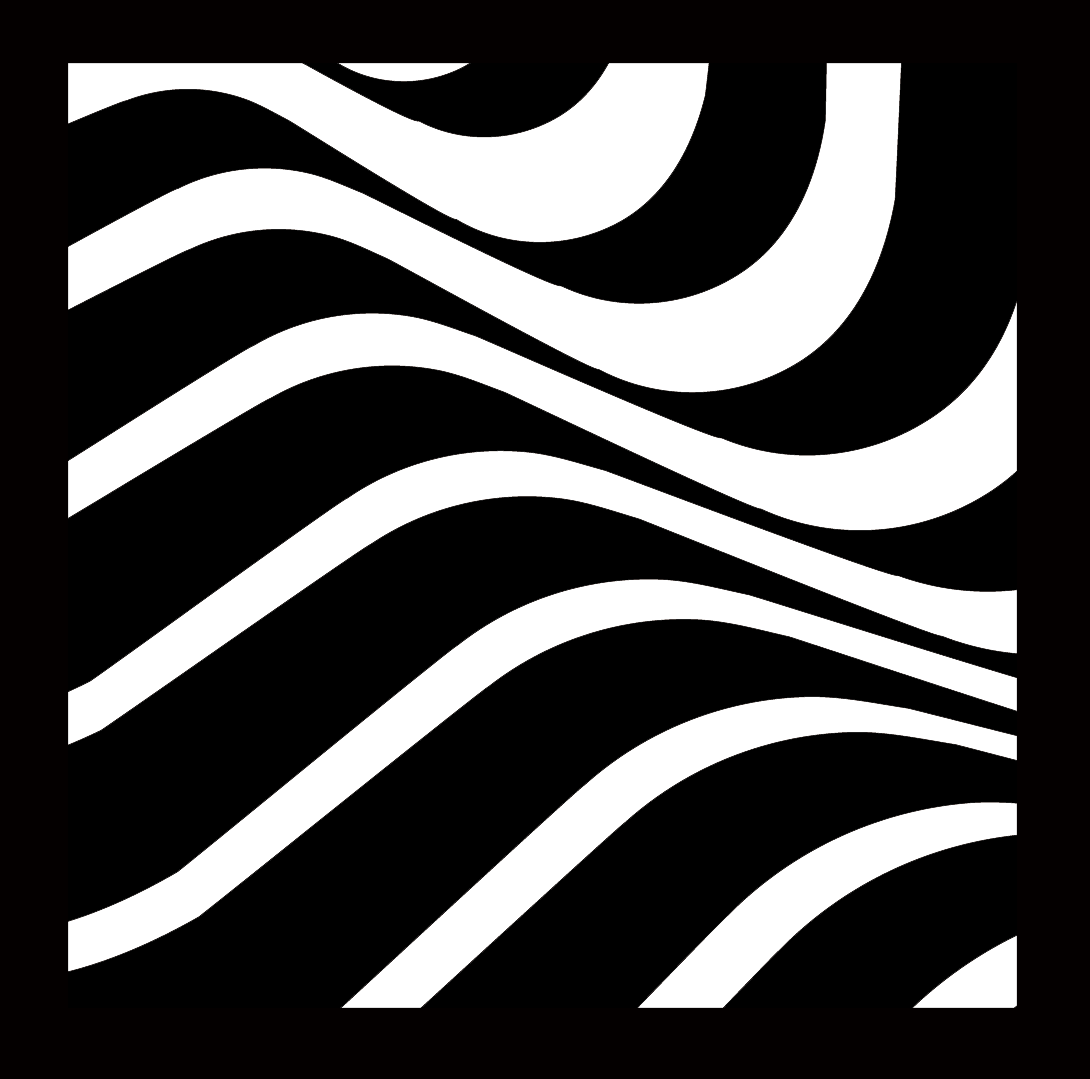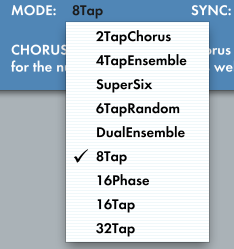In keeping with the tradition set by ValhallaShimmer and ValhallaRoom, there are several different “modes” in ValhallaÜberMod. These modes are selected by clicking on the name of the currently active mode, to the right of the “MODE:” text. A popup menu will appear, with the names of the available modes:
Each of the ÜberMod Modes selects a specific combination of delay output taps, as well as different modulation options for moving those taps around. I have referred to these as chorus modes or delay modes, but they are really both, so “modes” is probably the best description. A few things that all the Modes have in common:
- Separate LFOs for slower and faster modulation. The idea is that the slow LFOs are used to create the base “detuning” of the taps, while the fast LFOs are used to add string ensemble vibrato if desired. Of course, the user can use and abuse these controls however they see fit.
- Each delay tap in a mode is modulated by a unique LFO, or a unique phase from a multiphase LFO. This creates a high degree of aural complexity.
- The slower LFOs have their overall rate adjusted by MOD SlowRate, and their depth by MOD SlowDepth and MOD OverMod.
- The faster LFOs have their overall rate adjusted by MOD VibRate, and their depth by MOD VibDepth.
- True stereo, where left and right inputs feed separate delay buffers.
- An even number of delay taps, where half the taps are panned to the left, half to the right. The amount of panning is controlled by the DEPTH parameters. The 8Tap mode, for example, has 4 taps panned left, 4 panned right.
- All modes have a “pay for what you use” approach to CPU usage. The more taps there are, the higher the CPU. ValhallaÜberMod has been programmed using SIMD-optimized vector functions, so it is pretty darned optimized, but the laws of physics dictate that it is cheaper to compute 2 interpolated delay taps than 32 interpolated delay taps.
ValhallaÜberMod Version 1.0.0 ships with nine different delay/modulation modes:
- 2TapChorus has two modulated delay taps, one for the left input signal, one for the right input signal. The slow tap modulation is derived from a single triangle LFO, with the modulation phase inverted for one of the taps (I call this “antiphase modulation”). The vibrato modulation uses a quadrature oscillator, with the left and right modulations separated by 90 degrees. The 2TapChorus mode is useful for emulating the Roland Dimension C and Dimension D choruses, and also serves as a useful starting point for tape echos, diffusion-based reverbs, and all sorts of other effects.
- 4TapEnsemble has four modulated delay taps, two for the left input channel, two for the right input channel. There are two slow LFOs, one for the left taps and one for the right taps, using the same antiphase modulation as the 2TapChorus, but with different rates for each channel. Each channel has a single sine vibrato oscillator modulating one of the taps, with different rates for each input/output channel. The 4TapEnsemble can be viewed as 2 mono versions of the 2TapChorus, one panned left, and one panned right. The architecture was derived from the ensemble section of the VP330, and is naturally suited towards creating string ensemble emulations, as well as thick detuned choruses.
- SuperSix has 6 modulated delay taps (3 left/3 right). There are 3 slow triangle LFOs, using the antiphase modulation technique, with the LFO frequencies staggered to emulate the detuning of the sawtooth oscillators in the JP8000 SuperSaw. Each channel has its own independent 3-phase vibrato LFO (0/120/240 degree outputs), for emulating the vibrato component of classic string ensembles. The vibrato speed is slightly different between left and right channels, for a wider stereo spread. The SuperSix mode is a good starting point for emulating the “unison” control on older analog polyphonic synths, when all of the oscillators were used to create a massive detuned sound. SuperSix is also useful for creating triplet echos, short gated sounds, and other multitap effects.
- 6TapRandom has 6 modulated delay taps (3 left/3 right), and 3 slow LFOs, each of which has a randomized triangle waveform for the slow LFO. The left and right channels are modulated in antiphase, in a similar manner to the SuperSix mode, but the randomized triangle results in less audible patterns for the detuning. There are 6 independent vibrato LFOs, one for each output tap. The 6TapRandom mode is useful for thick multitap choruses, with less audible patterns than the SuperSix mode.
- DualEnsemble is a stereo version of the classic string ensemble choruses, as found in the Solina/ARP String Ensemble, Crumar Performer, Moog Opus 3, Korg Polysix, and so on. Each channel has its own dedicated 3-phase slow LFO (0/120/240 degree outputs), with each of the 3 taps per channel being modulated by its own phase. An identical LFO, running at a faster rate, is used for the vibrato modulation of the taps. The 3-phase LFOs for left and right channels are running at slightly different rates, to create the impression of a separate string ensemble for left and right channels. The DualEnsemble mode is the first place to turn for emulating vintage ensembles, but is also useful for creating unique effects that combine ensemble modulation with multitap effects and diffusion. Check out the SolinaVerb preset (in the Reverbs category) for an example that combines ensemble chorusing, diffusion, and feedback, to create a rich modulated reverb that adds complexity to synth pads.
- 8Tap has 8 modulated delay taps (4 left/4 right). There are 4 slow triangle LFOs, using the antiphase modulation technique, with the frequencies arranged to produce a smooth detuned sound at “sensible” settings, or a cluster of pitches when OverMod is used. There are 8 sine vibrato LFOs, one per each tap, for thick ensemble sounds. The 8Tap mode is useful for creating realistic orchestral choruses, multitap effects, short gated reverbs, ensemble effects that don’t have the distinctive 3-phase modulation patterns, crazy pitched echos (check out the presets in the Pitched folder, which all use the 8Tap mode) and all sorts of cool things.
- 16Phase is a 16-tap mode (8 taps left, 8 taps right) where all of the taps are modulated by two unique 16-phase sine LFOs, one for the slow modulation, and one for the vibrato. The phases are staggered left-right to get a wider spatial image. This is useful for creating a “super string ensemble” that has the distinctive lushness and artifacts of the old 3-phase string ensembles, only more so. The 16Phase mode is also useful for denser gated and reverse reverbs, nonlinear echos, metallic comb filtering (with the DEPTH set to 0.0), and areas I haven’t had the chance to explore yet.
- 16Tap is a 16-tap mode (8 taps left, 8 taps right). There are 8 slow triangle LFOs, using the antiphase modulation technique, with the frequencies arranged to produce a smooth distribution of detuned outputs. The triangle LFO phases are inverted between channels, to get a wide spatial image. There are 16 sine vibrato LFOs, one per each tap, with the frequencies staggered to simulate 16 separate sound sources. The 16Tap mode is useful for lush choruses that have less obvious “string ensemble” artifacts than the 16Phase mode, realistic modeling of large numbers of instruments, gated and reverse reverbs, and strong comb filters.
- 32Tap is essentially the same as the 16Tap mode, but with double the taps (16 taps left, 16 taps right) . There are 16 slow triangle LFOs, using the antiphase modulation technique, with the frequencies arranged to produce a smooth distribution of detuned outputs. The triangle LFO phases are inverted between channels, to get a wide spatial image. There are 32 sine vibrato LFOs, one per each tap, with the frequencies staggered to simulate 16 separate sound sources. The main application of the 32Tap mode is for nonlinear, gated and reverse reverbs, where the high tap density can be used in conjunction with the DIFF controls to get dense reverbs without feedback. All sorts of crazy echos and pseudo-reverbs can be made with the 32Tap mode. It is kinda overkill for chorus applications, but turn up the OverMod control and you can get crazy thick pitch shifting for drum reverbs.




